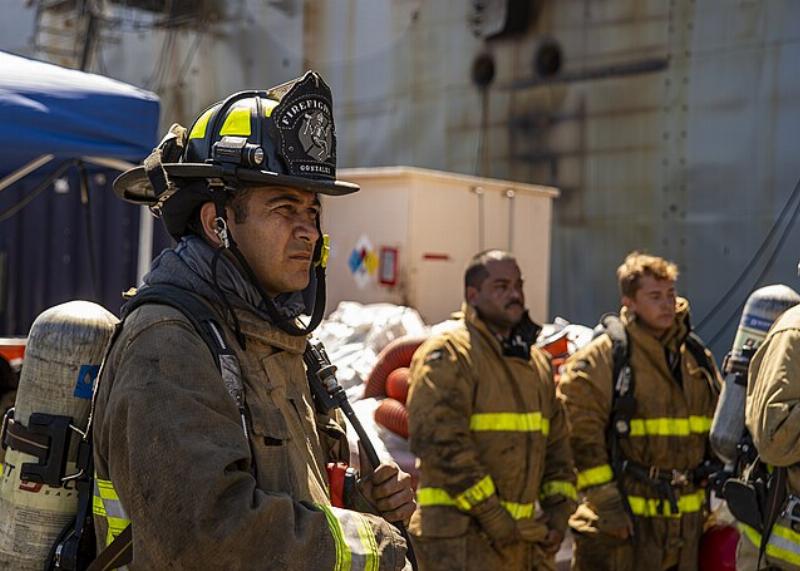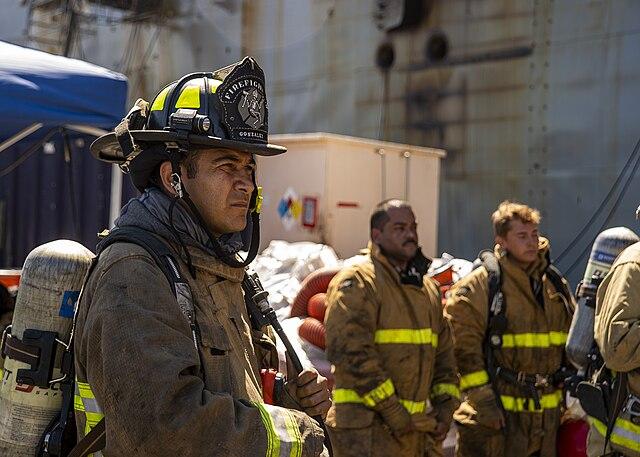


As long as lithium ion battery plants spontaneously combust and spew clouds of poisonous chemicals into the air, I don’t ever want to hear a progressive Democrat—voter, pundit, or politician—lecture me on the wildfires and “climate change” crises they swear are caused by my use of modest personal amenities.
On a tip from Monica Showalter comes this story, from the former paradise of southern California and The San Diego Union-Tribune (SDUT):
Fire flares up again at battery storage facility in Otay Mesa
An unpredictable blaze that sparked at a battery storage facility on Wednesday in Otay Mesa picked up again Thursday night, and firefighters worked to bring the flames back under control, a Cal Fire captain said Friday.
“Unpredictable blaze” my rear end. What a joke. In fact, the blaze was entirely predictable, because this was a warehouse of lithium-ion batteries, and lithium is highly flammable. That’s like saying no one could ever predict that a neighborhood meth lab might explode, or improperly stored ammonium nitrate at a fertilizer plant would also be a combustion hazard—when you’re dealing with extremely volatile compounds, there’s great risk involved, notwithstanding any propaganda that aims to diminish a particular fire hazard because there’s a “clean” energy communistic political agenda at play.
Now, the fire at the Gateway Energy Storage Facility first broke out around four o’clock in the afternoon this past Wednesday, and as is the case with lithium ion battery fires, they don’t really extinguish—lithium ion batteries are subject to what is called “thermal runaway,” or a chain reaction type of blaze. Fighting a fire like this means cooling down the battery as much as possible until the fire appears to extinguish or is at least under control; then you simply hope it doesn’t reignite, but you can’t actually know because you don’t know how many of the cells inside the battery pack have actually burned. If all the battery cells are burned, then it doesn’t reignite; if cooling the battery during the fire-fighting process halted the chain reaction, then the battery is at a serious risk of reigniting.
Now, Captain Mike Cornette’s crew cooled the battery storage blaze enough to get the fire to a manageable state, at which point they handed the work off to Gateway’s “mitigation team” to take over the job. However, as is obvious, the battery didn’t burn all the way, and reignited just a short time later. Here’s more, from SDUT:
Firefighters were still working from a distance due to the toxic fumes the fire created, Cornette said. The agency’s goal is to put out enough of the blaze so they can get close enough to extinguish it more fully — a process that will likely continue overnight and into Saturday . Firefighters set up additional monitoring equipment to keep an eye on the air quality surrounding the location.
Once the area is safe, the clean-up effort will again be handed over to the site’s property manager, which has its own hazardous materials team.
Now, the fire at Gateway isn’t exactly an outlier, but rather a datum point in a trend; here’s this, from a local ABC outlet:
The [Gateway] fire was the latest in a growing number of lithium ion battery blazes in the San Diego region.
The San Diego Fire-Rescue Department reported at least 32 such fires since mid-March, compared to 104 in the previous year, more than doubling from 2022, which saw 46 incidents.
Lithium ion batteries, commonly used in cell phones, laptops, and electric bikes, pose significant risks if not handled properly, experts said.
Professor Zheng Chen from the Department of Nano and Chemical Engineering at UC San Diego provided tips to prevent such mishap.
…
He added that lithium ion battery fires can quickly accelerate to temperatures exceeding 500 degrees.
Boy oh boy, San Diego firefighters must be getting some great overtime pay this year!
Naturally, with the growing notoriety of lithium-ion batteries, NIMBY attitudes are also growing. Here’s what Amy Reichert reported:
I do not blame them one bit—if it were me, I’d do everything in my power to prevent the intrusion of these things anywhere near my home and property. (The same goes for electric car chargers with their toxic frequencies.)
The detrimental cost of the “clean” and “green” agenda is truly untold.
How much will this insurance claim be? How much money has this facility already cost taxpayers, through tax breaks, grants, or corporate welfare? When insurance companies pay out massive claims, what does that do to the rates for everyone else?
What’s the extent of the environmental damage when toxic plumes fill the air? Everyone knows, or should know, that lithium-ion fires are a different beast—one fire department reported using “40 times” the amount of water they typically use to get a car fire under control because the car was an E.V. instead of a traditional ICE vehicle. I thought “climate change” was causing drought issues? How can “they” justify a hazard that consumes a disproportionate amount of water if things go south?
How many lawsuits will be filed down the road? Will some of these first responders develop cancer or other diseases, finding fault with the city for failing to regulate or prohibit, or the department for failure to adequately protect its employees and demand compensation? If (and when) that happens—we live in an unbearably litigious society—who really pays? Not the bureaucrats and politicians who pushed for the forced adoption of dangerous lithium technology, and not the voters who supported this sort of government tyranny, but the taxpayer.
What an insult to the idea of a “free” America.

Image: SurfaceWarriors, CC BY-SA 2.0, via Wikimedia Commons, unaltered.
